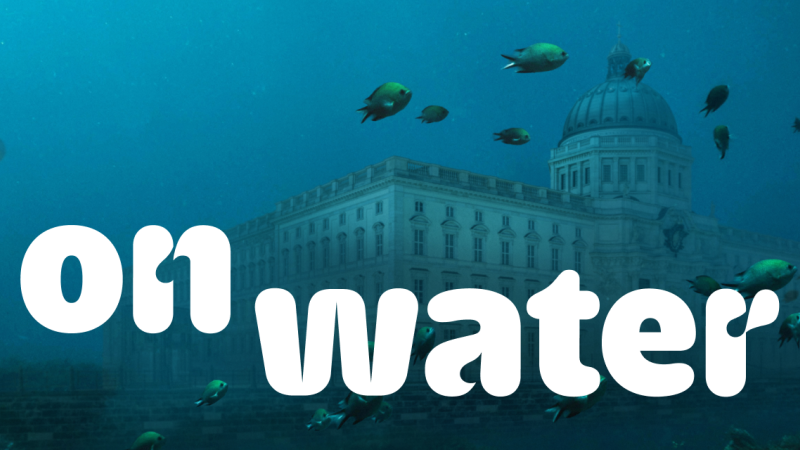Almost every major city in a landlocked country has a main artery - a river, such as River Spree for Berlin. But also tributaries, lakes and small water bodies are part of "urban blue". | Photo: IGB
Dr. Freyhof, the declared goal of your research network is to improve lakes and canals in urban spaces. Why have urban waters hit the agenda of biologists?
Urban waters are usually heavily modified waters that, according to the specifications of the European Water Framework Directive, are to achieve “good ecological potential”. This means an improvement of the waters without impairing their use by humans. However, the Water Framework Directive is being implemented very slowly, and questions of social justice have been neglected. We seek to involve citizens in the improvement of water bodies. We want more nature in the city and to take into account people’s wishes, which is why we seek ways in which the Water Framework Directive can help improve citizens’ quality of life. In cities, water bodies are particularly important as recreation areas – and yet only a certain section of the population is able to benefit from them. Many people living in socially disadvantaged areas have no access to water bodies in the vicinity. For this reason, the aspect of environmental justice plays an important role in the network’s work.
How much nature can be brought into the city? Much more than is currently the case, says Jörg Freyhof. At IGB he coordinates the interdisciplinary research network "ecological potential of urban waters". | Photo: IGB/David Ausserhofer
What is the situation of Berlin’s waters?
All of the city’s water bodies have been heavily modified by anthropogenic influences. Most of the stakeholders concerned with water in Berlin concentrate on the quality of water. There is indeed a lot of work to be done in that area, and a lot of money is being invested accordingly. For example, the rainwater and wastewater systems within Berlin’s S-Bahn ring converge with each other, and the system then overflows following heavy rainfall, meaning that faeces are discharged into water bodies untreated. This happens around 30 times a year. Now, however, millions are being invested in the construction of new underground storage facilities, which will considerably reduce the amount of spillage and improve the water quality. Major achievements are being accomplished in this area, and improved water quality is an important interim goal to make a city such as Berlin viable for the future. However, it also goes without saying that we do not want a city with great water quality, but where it is virtually impossible to get to the water because everything is built up and out of bounds. We want more nature in Berlin, so that one day people can swim in the River Spree again – at cool spots and in an urban setting.
That’s the aim of your project partner, Flussbad Berlin, which wants to create bathing opportunities on the Spree at the Kupfergraben. Is it a realistic goal?
Absolutely! Berlin’s style is to take up new and innovative ideas and to present itself as a functional city. Which is why the river swimming project has been included in the new coalition agreement. It will become a test case for whether we are capable of overcoming administrative obstacles for the benefit of citizens. Nowadays, swimming is prohibited in most federal waterways; this is the case with the Spree and all of Berlin’s canals. However, the “Blue Ribbon Germany” (Blaues Band Deutschland) programme, a joint initiative of the federal ministries of transport and environment, is intended to develop subsidiary waterways in environmental terms as well as improving them for leisure and recreation. It is a great opportunity for many of Berlin’s water bodies.
What other aspects are currently being addressed?
There are, of course, many areas that call for freshwater research. For example, the state of small water bodies and small lakes is deteriorating significantly. In Berlin, most of the rainwater is discharged into the sewage system and is unable to seep away. Many small water bodies dried up after the summer of 2018, when little rain fell. This is where we want to examine possibilities for enabling rainwater to seep away better throughout the city, which can then be stored for use.
How much nature can be brought into the city?
Much more than is currently the case! In Berlin, people have become used to being surrounded by water bodies that have more or less been destroyed and being unable to reach the water at many sites. But the city is home to a strong civil society that is open to visionary ideas. Science can expand on this strength!





